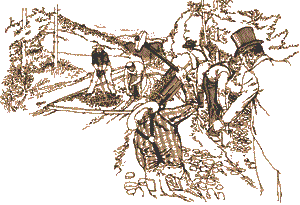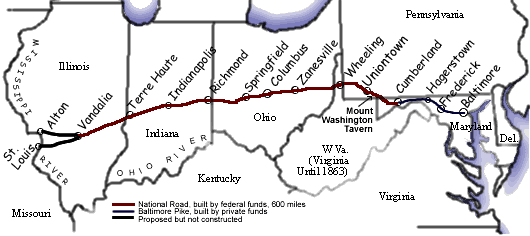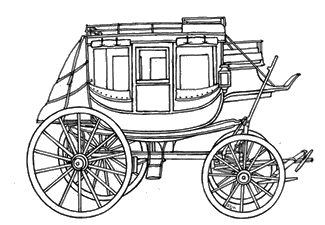Part of a series of articles titled National Road - America's First Federally Funded Highway.
Article
The National Road

The National Road was the first highway built entirely with federal funds. The road was authorized by Congress in 1806 during the Jefferson Administration. Construction began in Cumberland, Maryland in 1811. The route closely paralleled the military road opened by George Washington and General Braddock in 1754-55.
By 1818 the road had been completed to the Ohio River at Wheeling, which was then in Virginia. Eventually the road was pushed through central Ohio and Indiana reaching Vandalia, Illinois in the 1830's where construction ceased due to a lack of funds. The National Road opened the Ohio River Valley and the Midwest for settlement and commerce.

The opening of the National Road saw thousands of travelers heading west over the Allegheny Mountains to settle the rich land of the Ohio River Valley. Small towns along the National Road's path began to grow and prosper with the increase in population. Towns such as Cumberland, Uniontown, Brownsville, Washington and Wheeling evolved into commercial centers of business and industry. Uniontown was the headquarters for three major stagecoach lines which carried passengers over the National Road. Brownsville, on the Monongahela River, was a center for steamboat building and river freight hauling. Many small towns and villages along the road contained taverns, blacksmith shops, and livery stables.

Continue to learn more about the National Road...
Last updated: June 12, 2022
